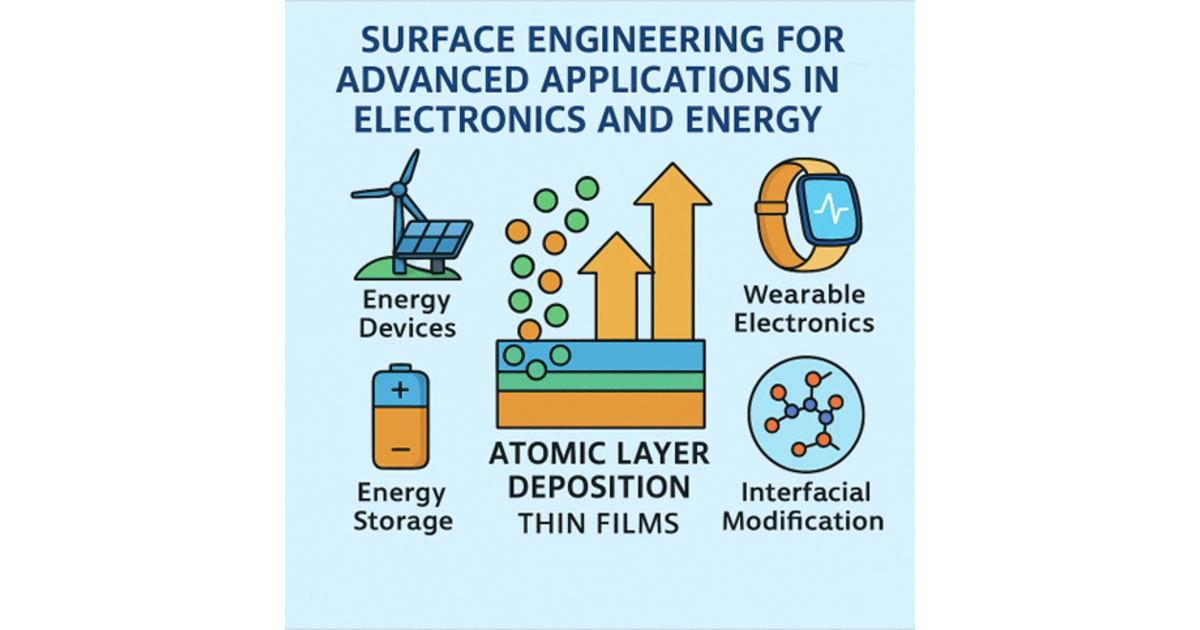- 2.8Impact Factor
- 5.4CiteScore
- 15 daysTime to First Decision
Surface Engineering for Advanced Applications in Electronics and Energy
This special issue belongs to the section “Surface Engineering for Energy Harvesting, Conversion, and Storage“.
Special Issue Information
Dear Colleagues,
Surface engineering has emerged as a pivotal technique in advancing the performance, durability, and functionality of materials used in modern electronics and energy systems. By tailoring interfacial properties using innovative coatings, nanostructured films, and chemical modification techniques, researchers have enabled significant breakthroughs in the development of devices such as solid-state batteries, solar cells, sensors, and wearable electronics. The field has gained increasing attention due to the growing demand for sustainable, miniaturized, and high-efficiency systems in the context of the global clean energy transition.
This Special Issue of Coatings, “Surface Engineering for Advanced Applications in Electronics and Energy”, seeks to highlight recent advances in thin-film technologies, interfacial characterization, and surface functionalization strategies that support the development of next-generation materials and devices. We aim to provide a platform for researchers working at the intersection of materials science, electrochemistry, nanotechnology, and applied surface physics to share their latest findings.
We invite the submission of original research articles, reviews, and short communications, with topics of interest including, but not limited to, the following:
- Atomic layer deposition (ALD), chemical vapor deposition (CVD), and other thin-film techniques;
- Nanostructured and multifunctional coatings for energy devices;
- Interfacial engineering in lithium-ion and solid-state batteries;
- Surface modifications to enhance thermal, electrical, or corrosion resistance;
- Advanced surface characterization (XPS, AFM, TEM, ellipsometry);
- Coatings for wearable, flexible, and printed electronics;
- Bioinspired or hybrid coatings for energy conversion and storage;
- Self-healing or stimuli-responsive surface systems.
We look forward to receiving your valuable contributions.
Dr. Pragathi Darapaneni
Guest Editor
Manuscript Submission Information
Manuscripts should be submitted online at www.mdpi.com by registering and logging in to this website. Once you are registered, click here to go to the submission form. Manuscripts can be submitted until the deadline. All submissions that pass pre-check are peer-reviewed. Accepted papers will be published continuously in the journal (as soon as accepted) and will be listed together on the special issue website. Research articles, review articles as well as short communications are invited. For planned papers, a title and short abstract (about 250 words) can be sent to the Editorial Office for assessment.
Submitted manuscripts should not have been published previously, nor be under consideration for publication elsewhere (except conference proceedings papers). All manuscripts are thoroughly refereed through a single-blind peer-review process. A guide for authors and other relevant information for submission of manuscripts is available on the Instructions for Authors page. Coatings is an international peer-reviewed open access monthly journal published by MDPI.
Please visit the Instructions for Authors page before submitting a manuscript. The Article Processing Charge (APC) for publication in this open access journal is 2600 CHF (Swiss Francs). Submitted papers should be well formatted and use good English. Authors may use MDPI's English editing service prior to publication or during author revisions.
Keywords
- surface engineering
- thin films
- atomic layer deposition
- energy storage devices
- interfacial modification

Benefits of Publishing in a Special Issue
- Ease of navigation: Grouping papers by topic helps scholars navigate broad scope journals more efficiently.
- Greater discoverability: Special Issues support the reach and impact of scientific research. Articles in Special Issues are more discoverable and cited more frequently.
- Expansion of research network: Special Issues facilitate connections among authors, fostering scientific collaborations.
- External promotion: Articles in Special Issues are often promoted through the journal's social media, increasing their visibility.
- e-Book format: Special Issues with more than 10 articles can be published as dedicated e-books, ensuring wide and rapid dissemination.

